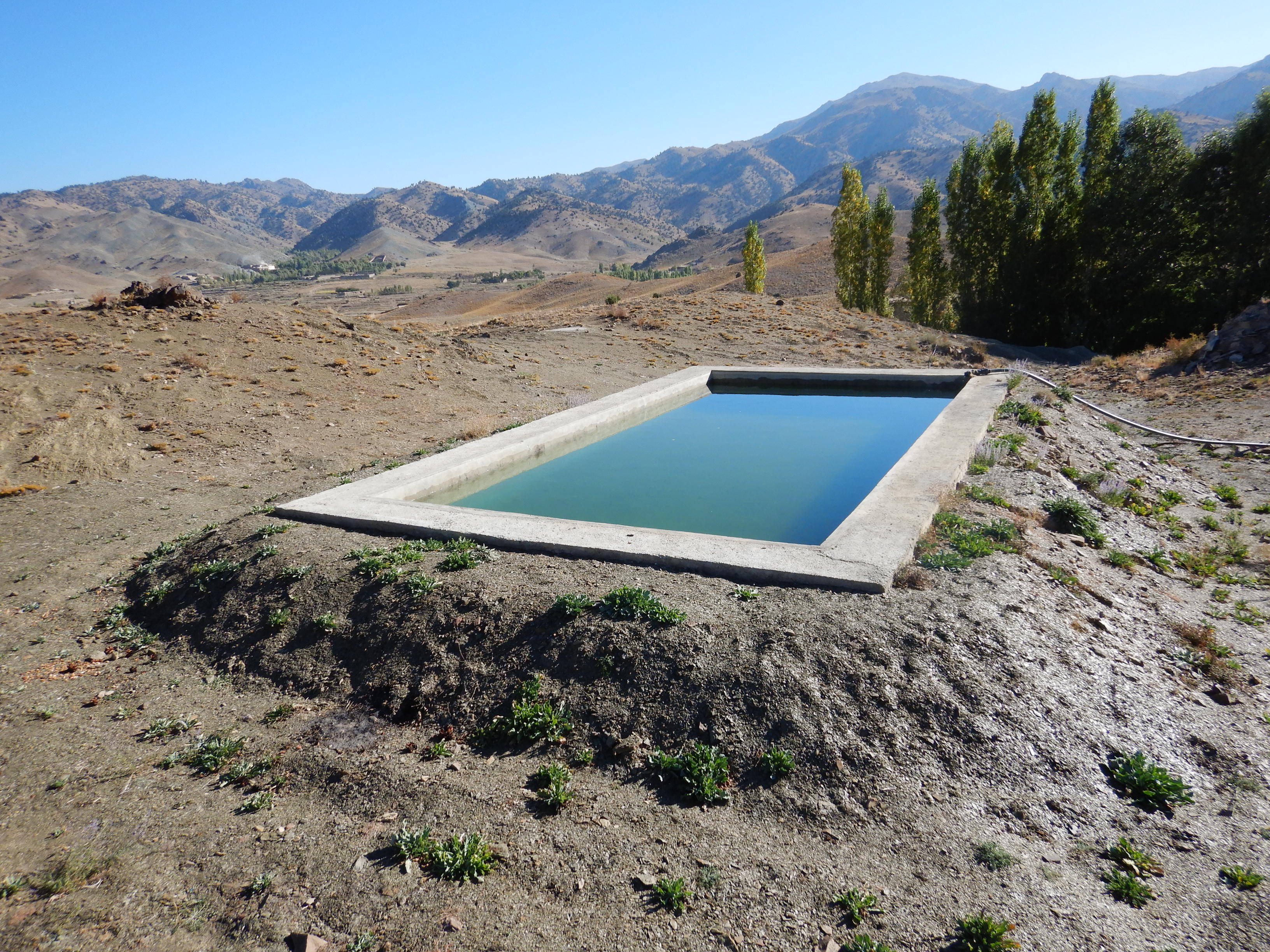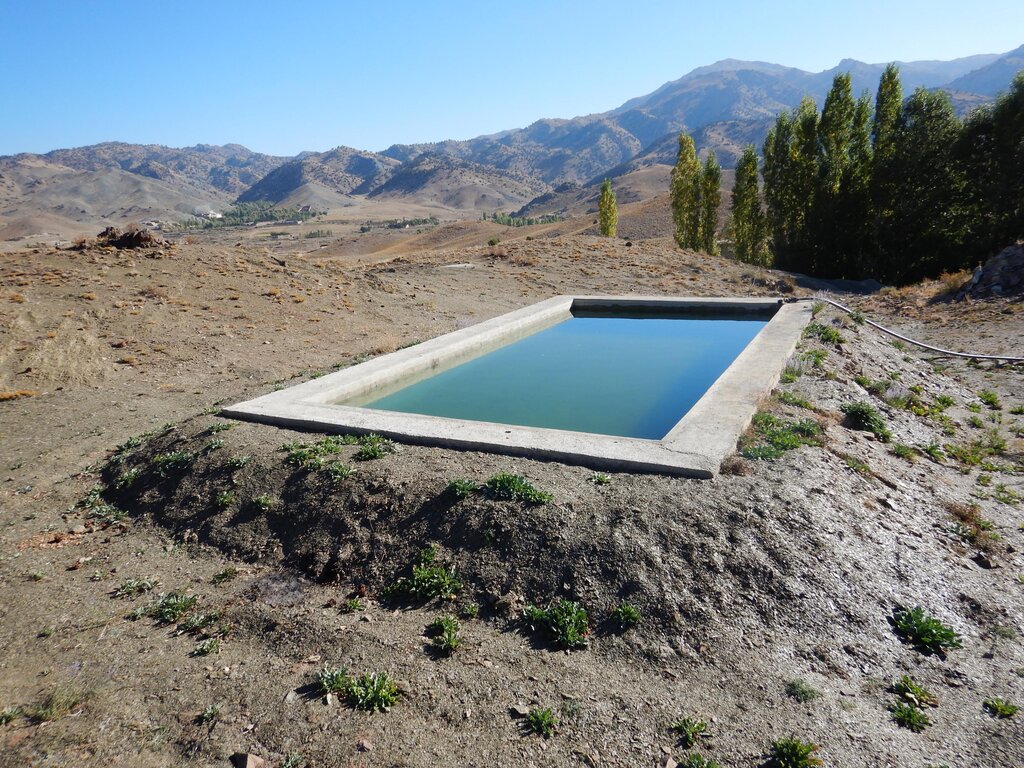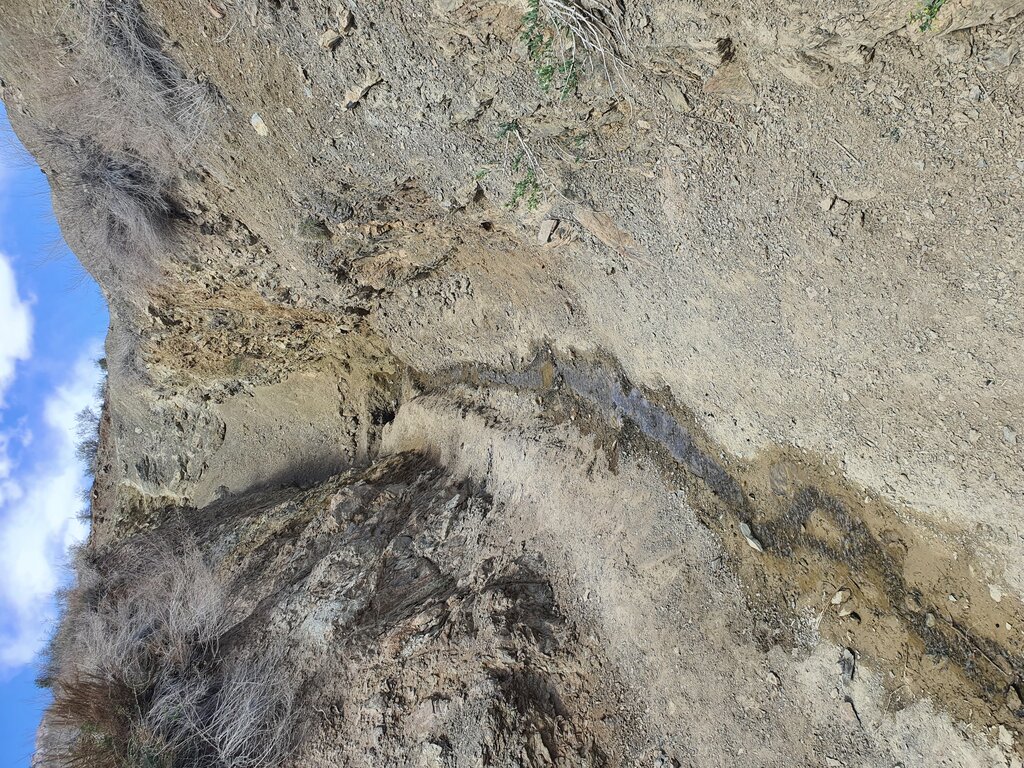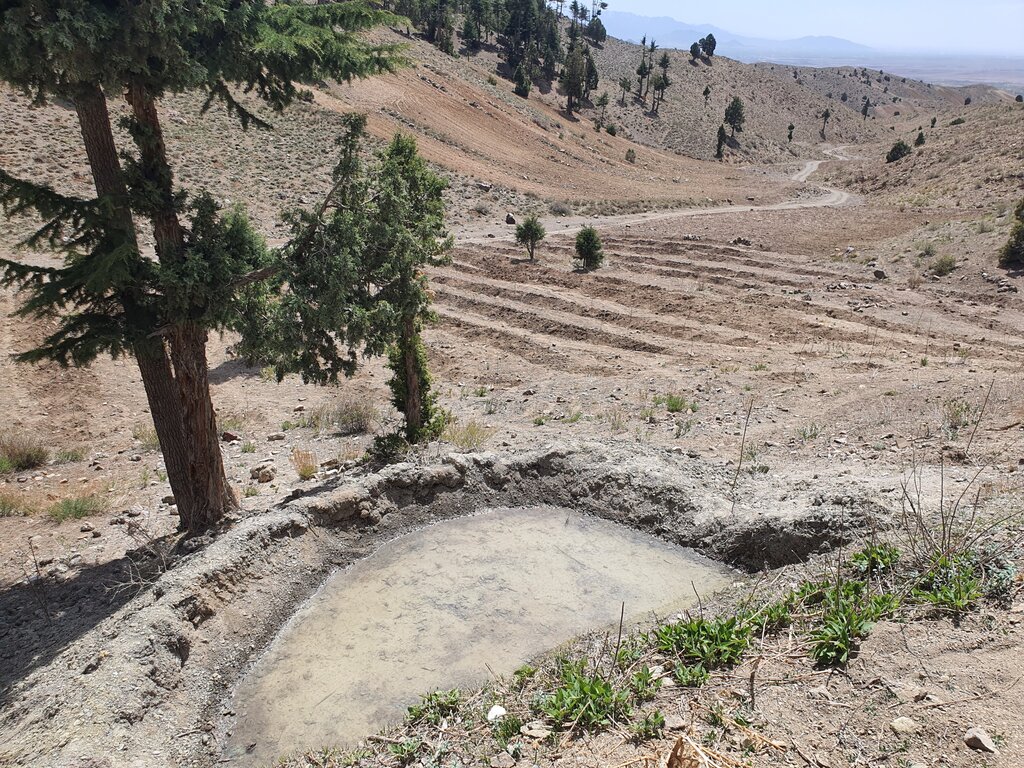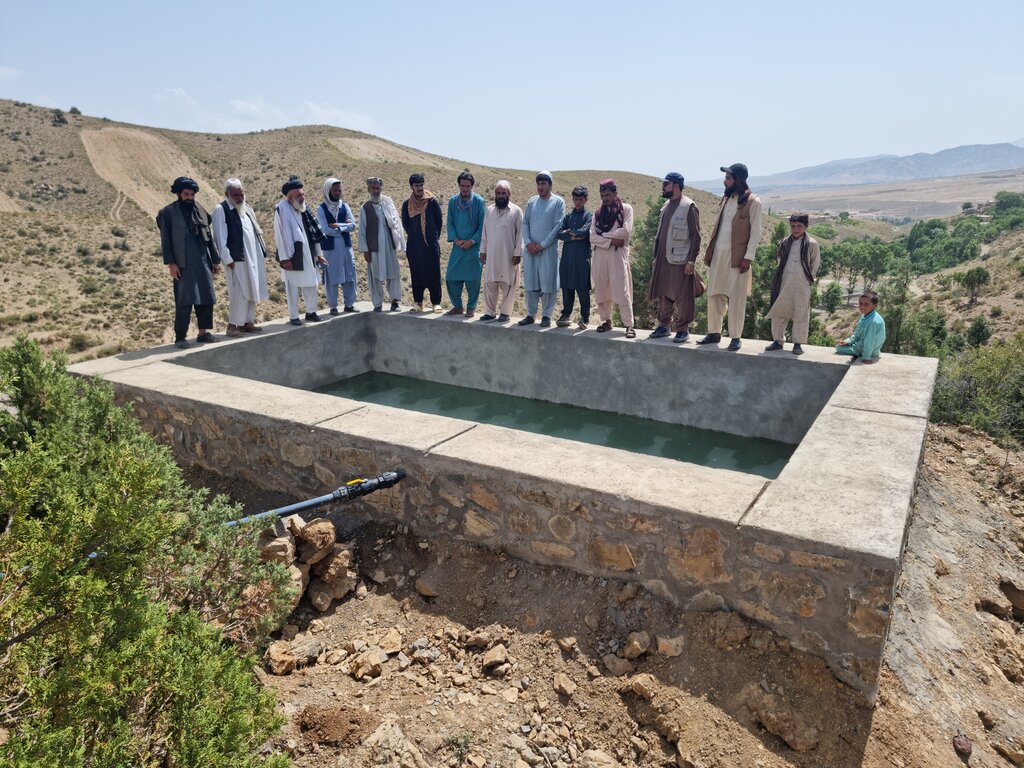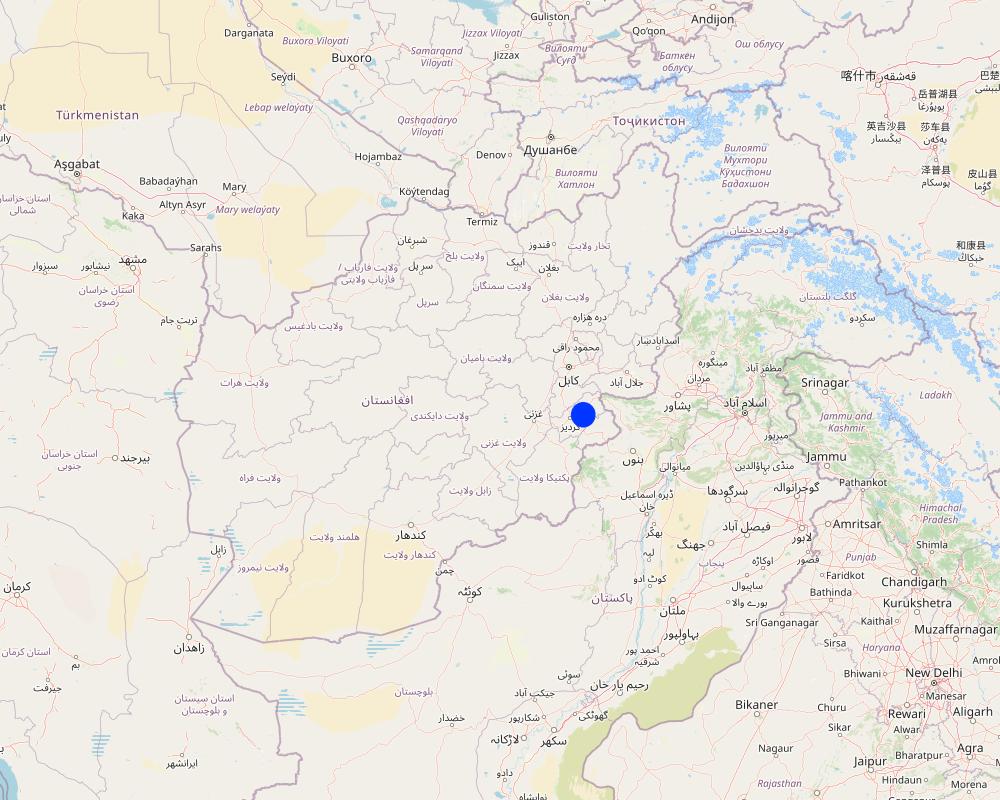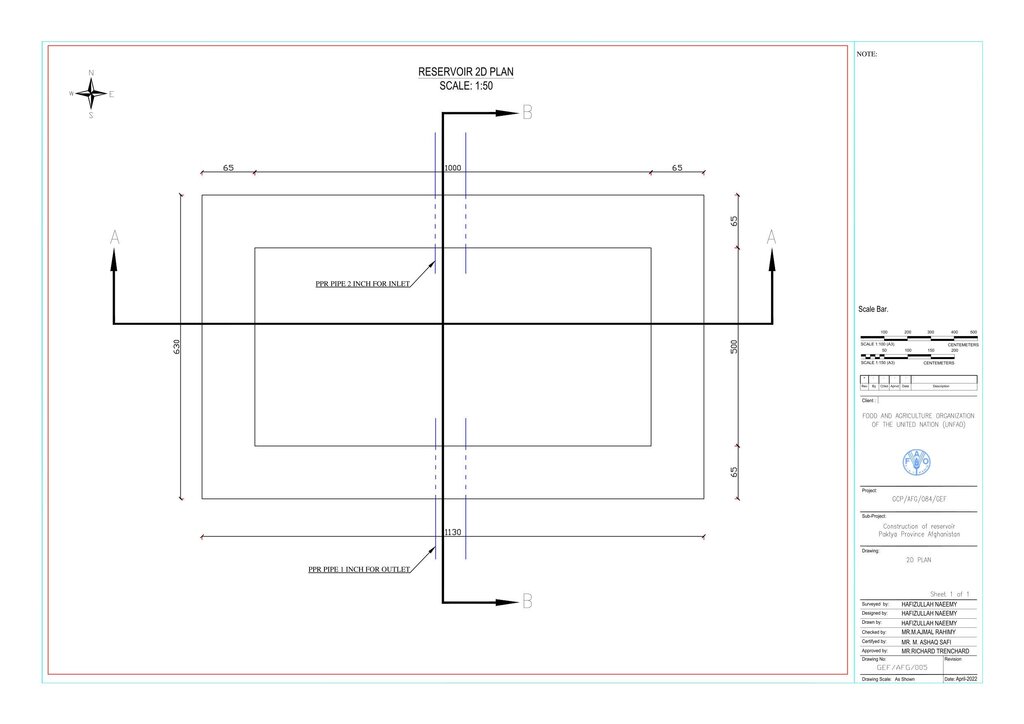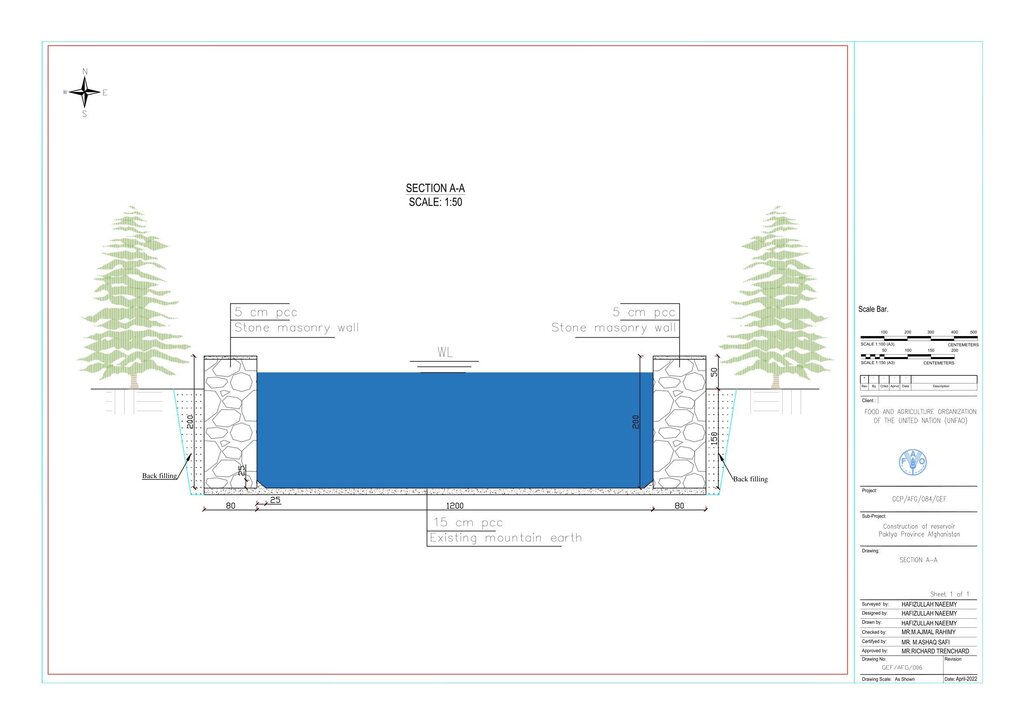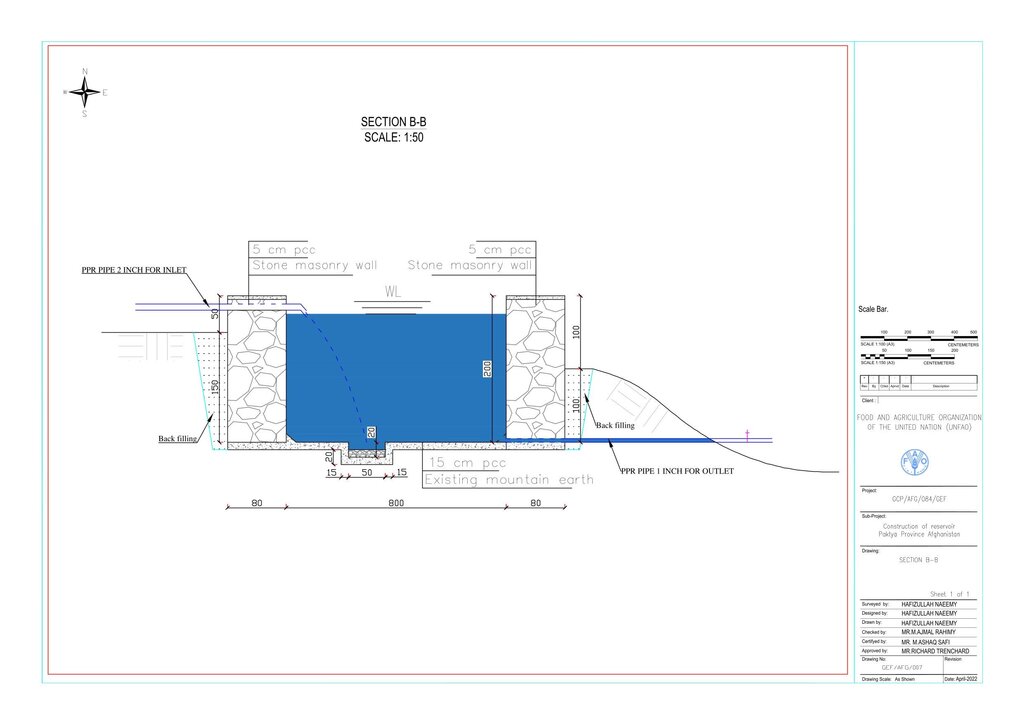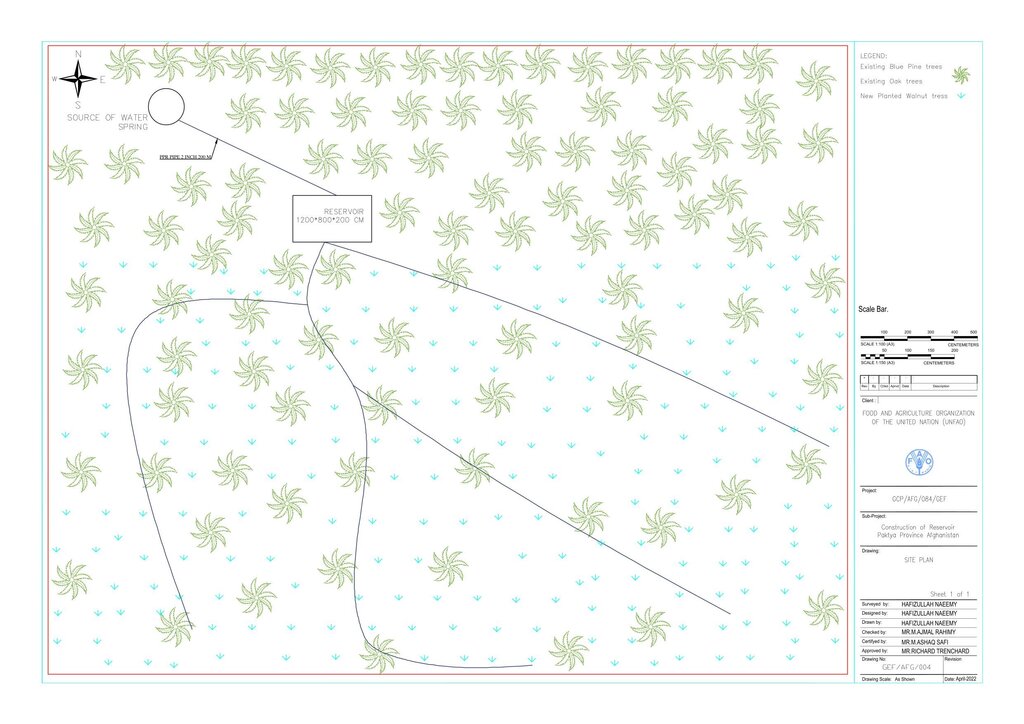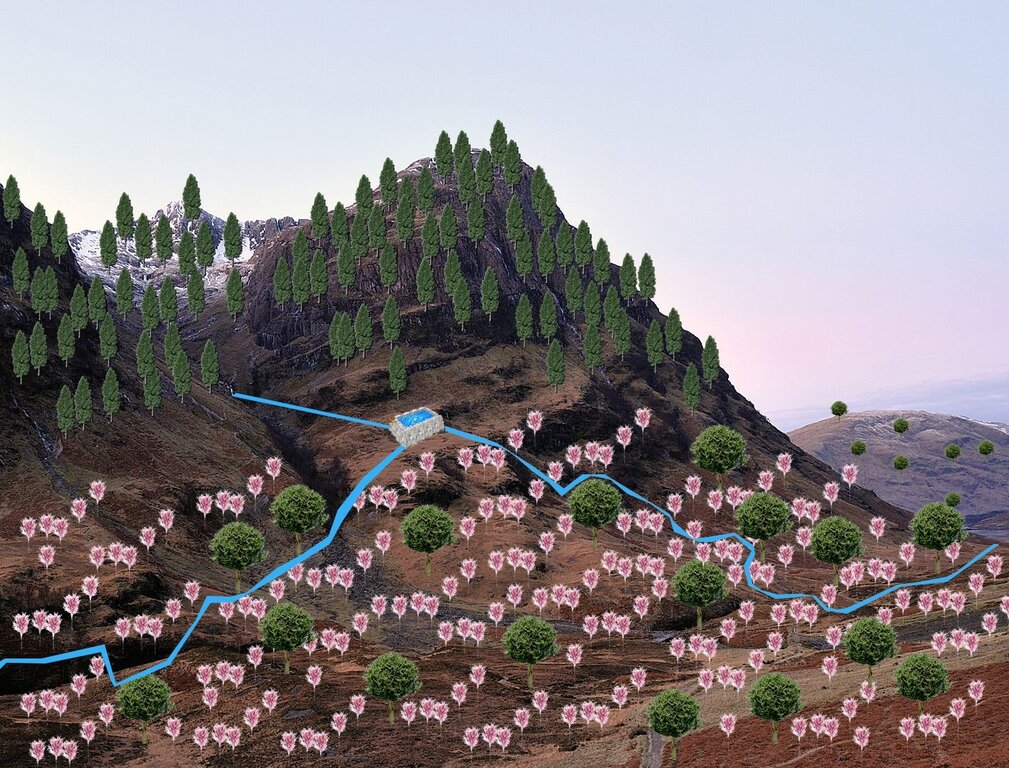Gravity Irrigation for enhancing Community-Based Restoration efforts in the degraded forests of Paktya [Afghanistan]
- Création :
- Mise à jour :
- Compilateur : Mohammad Wazir Ahmadzai
- Rédacteurs : Mir Wali Khan Lakanwal, Mohammad Mustafa Sahebzada, Mohammad Ajmal Rahimy
- Examinateurs : Rima Mekdaschi Studer, Illias Animon, Muhammad Ishaq Safi, Megha bajaj
Obu Zakhira
technologies_7481 - Afghanistan
Voir les sections
Développer tout Réduire tout1. Informations générales
1.2 Coordonnées des personnes-ressources et des institutions impliquées dans l'évaluation et la documentation de la Technologie
Nom du projet qui a facilité la documentation/ l'évaluation de la Technologie (si pertinent)
Community-based sustainable land and forest management in AfghanistanNom du ou des institutions qui ont facilité la documentation/ l'évaluation de la Technologie (si pertinent)
FAO Afghanistan (FAO Afghanistan) - Afghanistan1.3 Conditions relatives à l'utilisation par WOCAT des données documentées
Le compilateur et la(les) personne(s) ressource(s) acceptent les conditions relatives à l'utilisation par WOCAT des données documentées:
Oui
1.4 Déclaration sur la durabilité de la Technologie décrite
Est-ce que la Technologie décrite ici pose problème par rapport à la dégradation des terres, de telle sorte qu'elle ne peut pas être déclarée comme étant une technologie de gestion durable des terres?
Non
2. Description de la Technologie de GDT
2.1 Courte description de la Technologie
Définition de la Technologie:
Using a gravity-irrigation system, spring water is diverted to fill reservoirs and then distributed to fields for the restoration of degraded forest areas, with the active involvement of local communities and a focus on the sustainable use of water resources (spring water).
2.2 Description détaillée de la Technologie
Description:
The Paktya province in Afghanistan, known for its mountainous terrain and rich forests of pine nuts deodar, cedar, and conifers, faces severe challenges. Most water in the province comes from rivers, springs, and tube wells, with high mountains acting as natural reservoirs. Unfortunately, many traditional water sources have been destroyed over decades of conflict and natural drought, forcing farmers to rely on costly tube wells for irrigation.
To support sustainable water management in the mountainous areas of Ahmad Aba and Sayed Karam districts, 60 water reservoirs with a total storage capacity of 6,000 m³ were constructed. The volume of individual reservoirs varies depending on the availability and flow of upstream spring water ranging from 36 m³ to 192 m³.
Water is diverted from a small intake near the source and delivered to the reservoir inlet through a 2-inch Polyvinyl Chloride (PVC) pipe. For irrigation of the restored areas, the outlets from the reservoirs are connected to 1-inch PVC pipes for distributing water to various plantation sites.
This technology is applied in a natural environment and is designed to support environmental sustainability by recharging the groundwater table, as water is harvested into reservoirs, it can infiltrate through the side walls and bottom. This percolation process contributes to the natural hydrological cycle, harvesting surplus water (water evaporate or percolating into atmosphere or soil) into reservoirs for irrigation of planted saplings, and extending existing forest boundaries.
The system enables the local community to sustainably manage and utilize spring water for gravity-based irrigation of restored areas, while also supporting the expansion of forested land through sapling plantation.
Before constructing the reservoirs, a feasibility survey of the water source (the spring) was conducted to verify the perennial availability of water and to determine the optimal distance between the spring and the designated reforestation sites. The preliminary selection of reservoir locations was based on key criteria including the year-round reliability of the water source, the size of the target reforestation area, and the discharge capacity of the spring. Excavation of the rocky mountain earth was carried out using a hand excavator as per the specified requirements as per technical drawing and approved design. The stone masonry work was completed using random rubble coursed stone with a cement-sand mortar mix (1:2, Type A). As per the design, Plain Cement Concrete (PCC M20) was applied to the top of the stone masonry and on all floors of the reservoirs. A 20 mm thick plastering was carried out on the internal walls using cement-sand mix (1:2). The external walls were backfilled to a height of 1.5 meters.
The benefits of this gravity-fed irrigation technique include increased reforestation rates, reduced water loss due to evaporation and runoff, achieved by using closed piping systems instead of open channels, and improved water use efficiency. These improvements have led to higher sapling survival rates and better growth. Overall, the socio-economic and environmental conditions of rural populations have been improved. Additionally, the implementation of the gravity irrigation system has reduced the cost of restoring degraded forests.
As a low-cost, environmentally friendly technology, it allows for the efficient harvesting of spring water for irrigation, supports sapling planting for carbon sequestration, and helps mitigate the severe impacts of climate change.
2.3 Photos de la Technologie
2.5 Pays/ région/ lieux où la Technologie a été appliquée et qui sont couverts par cette évaluation
Pays:
Afghanistan
Région/ Etat/ Province:
Paktya
Autres spécifications du lieu:
Ahamd Aba and Sayed Karam district
Spécifiez la diffusion de la Technologie:
- répartie uniformément sur une zone
Est-ce que les sites dans lesquels la Technologie est appliquée sont situés dans des zones protégées en permanence?
Oui
Commentaires:
The technology being applied in various location of forest areas, while in the map only two points highlighted in Ahmad Aba and Sayed Karam district of Paktya
However, 46 water reservoirs constructed in Sayed Karam, while 14 water reservoirs constructed in Ahmad Ab
Map
×2.6 Date de mise en œuvre de la Technologie
Si l'année précise est inconnue, indiquez la date approximative: :
- il y a moins de 10 ans (récemment)
2.7 Introduction de la Technologie
Spécifiez comment la Technologie a été introduite: :
- par le biais de projets/ d'interventions extérieures
3. Classification de la Technologie de GDT
3.1 Principal(aux) objectif(s) de la Technologie
- réduire, prévenir, restaurer les terres dégradées
- préserver l'écosystème
- protéger un bassin versant/ des zones situées en aval - en combinaison avec d'autres technologies
- conserver/ améliorer la biodiversité
- atténuer le changement climatique et ses impacts
- créer un impact économique positif
- créer un impact social positif
3.2 Type(s) actuel(s) d'utilisation des terres, là où la Technologie est appliquée
Les divers types d'utilisation des terres au sein du même unité de terrain: :
Non
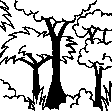
Forêts/ bois
- Plantations d'arbres, boisements
Plantation d'arbres, afforestation: Précisez l'origine et la composition des espèces. :
- Variété locale en monoculture
Type de plantation d'arbres, d'afforestation:
- plantations de forêts sèches subtropicales - Pinus spp.
Type d’arbres:
- Espèces de Pinus (pin)
Est-ce que les espèces d’arbres précisées ci-dessus sont des espèces d'arbre arbres à feuilles caduques ou à feuilles persistantes ?
- forêt mixte décidue/ à feuillage persistant
Produits et services:
- Bois d'œuvre (de construction)
- Bois de chauffage
- Fruits et noix
3.3 Est-ce que l’utilisation des terres a changé en raison de la mise en œuvre de la Technologie ?
Est-ce que l’utilisation des terres a changé en raison de la mise en œuvre de la Technologie ?
- Non (Passez à la question 3.4)
Les divers types d'utilisation des terres au sein du même unité de terrain: :
Non
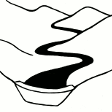
Voies d'eau, plans d'eau, zones humides
Commentaires:
With the implementation of the technology, degraded land has been restored to forested areas through reforestation.
3.4 Approvisionnement en eau
Approvisionnement en eau des terres sur lesquelles est appliquée la Technologie:
- pleine irrigation
3.5 Groupe de GDT auquel appartient la Technologie
- gestion des plantations forestières
- gestion de l'irrigation (incl. l'approvisionnement en eau, le drainage)
- gestion des eaux de surface (sources, rivières, lacs, mers)
3.6 Mesures de GDT constituant la Technologie
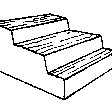
structures physiques
- S5: Barrages/retenues, micro-bassins, étangs
3.7 Principaux types de dégradation des terres traités par la Technologie
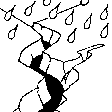
érosion hydrique des sols
- Wt: perte de la couche superficielle des sols (couche arable)/ érosion de surface
- Wg: ravinement/ érosion en ravines
3.8 Prévention, réduction de la dégradation ou réhabilitation des terres dégradées
Spécifiez l'objectif de la Technologie au regard de la dégradation des terres:
- réduire la dégradation des terres
4. Spécifications techniques, activités, intrants et coûts de mise en œuvre
4.1 Dessin technique de la Technologie
Spécifications techniques (associées au dessin technique):
Technical drawing: indicated the details of the dimension of water reservoirs
Auteur:
Hafizullah Neemy
Date:
30/03/2022
Spécifications techniques (associées au dessin technique):
Technical drawing
Auteur:
Hafizullah Neemy
Date:
23/03/2022
Spécifications techniques (associées au dessin technique):
Technical drawing
Auteur:
Hafizullah Neemy
Date:
30/03/2022
Spécifications techniques (associées au dessin technique):
Drawing
Auteur:
Hafizullah Neemy
Date:
30/03/2022
4.2 Informations générales sur le calcul des intrants et des coûts
Spécifiez la manière dont les coûts et les intrants ont été calculés:
- par superficie de la Technologie
Indiquez la monnaie utilisée pour le calcul des coûts:
- dollars américains
Indiquez le coût salarial moyen de la main d'œuvre par jour:
5
4.3 Activités de mise en place/ d'établissement
| Activité | Calendrier des activités (saisonnier) | |
|---|---|---|
| 1. | Excavation to build reservoirs | When construction work is possible |
| 2. | Back filling of all outside of reservoir through soil | After construction the reservoir |
| 3. | Stone masonry using random rubble coursed stone, laid with a cement-sand mortar mix of 1:2 (Type A) | When construction work is possible |
| 4. | Plain Cement Concrete (PCC) M20 with formwork and waterproof compound applied under and on top of the stone masonry, as well as on the reservoir floor | When construction work is possible |
| 5. | Plastering of internal reservoir wall with cement sand (mix 1:2), 20 mm thick | When construction work is possible |
| 6. | Installation of pipes; 1 and 2 inch with elbow, joints , and connectors and valves for fitting in outlet and inlet area of reservoir | After construction work |
4.4 Coûts et intrants nécessaires à la mise en place
| Spécifiez les intrants | Unité | Quantité | Coûts par unité | Coût total par intrant | % des coût supporté par les exploitants des terres | |
|---|---|---|---|---|---|---|
| Main d'œuvre | Excavation to build the reservoris | M3 | 62,0 | 10,0 | 620,0 | |
| Main d'œuvre | Stone masonry using random rubble coursed stone, laid with a cement-sand mortar mix of 1:2 (Type A) | M3 | 23,0 | 14,0 | 322,0 | |
| Main d'œuvre | Plain Cement Concrete (PCC) M20 with formwork and waterproof compound applied under and on top of the stone masonry, as well as on the reservoir floor | M3 | 6,0 | 14,0 | 84,0 | |
| Main d'œuvre | Plastering of internal reservoir wall with cement sand (mix 1:2), 20 mm thick | M3 | 42,0 | 14,0 | 588,0 | |
| Main d'œuvre | Back filling of all outside of reservoir through soil | Man-days | 5,0 | 5,0 | 25,0 | |
| Main d'œuvre | Installation of pipes; 1 and 2 inch with elbow, joints , and connectors and valves for fitting in outlet and inlet area of reservoir | Man-days | 8,0 | 5,0 | 40,0 | |
| Equipements | Shovel | PC | 5,0 | 5,0 | 25,0 | |
| Equipements | Hammer | PC | 2,0 | 10,0 | 20,0 | |
| Equipements | Excavator (taking by rent for excavation) | Cubic meter cost | 192,0 | 10,0 | 1920,0 | |
| Matériaux de construction | Cement | Package | 75,0 | 6,0 | 450,0 | |
| Matériaux de construction | Stone | Cubic meters | 23,0 | 14,0 | 322,0 | |
| Matériaux de construction | Polyethelen pipe 1 inch | Meter | 500,0 | 0,8 | 400,0 | |
| Matériaux de construction | Polyethelen pipe 2 inch | Meter | 200,0 | 1,0 | 200,0 | |
| Matériaux de construction | Elbow joint | Piece | 3,0 | 1,0 | 3,0 | |
| Matériaux de construction | Valves | Piece | 4,0 | 4,0 | 16,0 | |
| Matériaux de construction | Sand | Cumbic meter | 20,0 | 5,0 | 100,0 | |
| Autre | Transportation | LS | 1,0 | 700,0 | 700,0 | |
| Coût total de mise en place de la Technologie | 5835,0 | |||||
| Coût total de mise en place de la Technologie en dollars américains (USD) | 5835,0 | |||||
4.5 Activités d'entretien/ récurrentes
| Activité | Calendrier/ fréquence | |
|---|---|---|
| 1. | Installation of pipes to outlet and inlet area of water reservoir | Spring season |
| 2. | Maintenance of reservoir for clearing and unclogging the inlet area | As per requirement |
| 3. | Replacement and installation of valves and elbow joints to prevent water clogging in the pipes | During non-function |
| 4. | The embankment constructed to accumulate the water and put the pipes inside to water for diverting to the reservoir | Spring season |
4.6 Coûts et intrants nécessaires aux activités d'entretien/ récurrentes (par an)
| Spécifiez les intrants | Unité | Quantité | Coûts par unité | Coût total par intrant | % des coût supporté par les exploitants des terres | |
|---|---|---|---|---|---|---|
| Main d'œuvre | Labour for repairing of pipes at outlet and valves | Person | 1,0 | 100,0 | 100,0 | 100,0 |
| Main d'œuvre | Labour for clearing and unclogging | Person | 1,0 | 50,0 | 50,0 | 100,0 |
| Matériaux de construction | Valves | PC | 5,0 | 3,0 | 15,0 | 100,0 |
| Matériaux de construction | Elbow joint | Pc | 5,0 | 1,0 | 5,0 | 100,0 |
| Coût total d'entretien de la Technologie | 170,0 | |||||
| Coût total d'entretien de la Technologie en dollars américains (USD) | 170,0 | |||||
4.7 Facteurs les plus importants affectant les coûts
Décrivez les facteurs les plus importants affectant les coûts :
The distance between the spring and reservoir can affect the total cost of technology
5. Environnement naturel et humain
5.1 Climat
Précipitations annuelles
- < 250 mm
- 251-500 mm
- 501-750 mm
- 751-1000 mm
- 1001-1500 mm
- 1501-2000 mm
- 2001-3000 mm
- 3001-4000 mm
- > 4000 mm
Spécifiez la pluviométrie moyenne annuelle (si connue), en mm:
553,00
Zone agro-climatique
- semi-aride
5.2 Topographie
Pentes moyennes:
- plat (0-2 %)
- faible (3-5%)
- modéré (6-10%)
- onduleux (11-15%)
- vallonné (16-30%)
- raide (31-60%)
- très raide (>60%)
Reliefs:
- plateaux/ plaines
- crêtes
- flancs/ pentes de montagne
- flancs/ pentes de colline
- piémonts/ glacis (bas de pente)
- fonds de vallée/bas-fonds
Zones altitudinales:
- 0-100 m
- 101-500 m
- 501-1000 m
- 1001-1500 m
- 1501-2000 m
- 2001-2500 m
- 2501-3000 m
- 3001-4000 m
- > 4000 m
Indiquez si la Technologie est spécifiquement appliquée dans des:
- situations convexes
Commentaires et précisions supplémentaires sur la topographie:
The construction site is situated at an elevation of 2500-3000 meters above sea level, with a terrain slope ranging from 15% to 20%. Photo related to field skitch, indicated that the area of reforestation is around the reservoir.
5.3 Sols
Profondeur moyenne du sol:
- très superficiel (0-20 cm)
- superficiel (21-50 cm)
- modérément profond (51-80 cm)
- profond (81-120 cm)
- très profond (>120 cm)
Texture du sol (de la couche arable):
- grossier/ léger (sablonneux)
- moyen (limoneux)
Texture du sol (> 20 cm sous la surface):
- moyen (limoneux)
Matière organique de la couche arable:
- moyen (1-3%)
5.4 Disponibilité et qualité de l'eau
Profondeur estimée de l’eau dans le sol:
< 5 m
Disponibilité de l’eau de surface:
excès
Qualité de l’eau (non traitée):
eau potable
La qualité de l'eau fait référence à:
à la fois les eaux souterraines et de surface
Commentaires et précisions supplémentaires sur la qualité et la quantité d'eau:
As the water from spring harvesting through pipes and accumulated in reservoirs can reduced the evaporation and stored for 2 or 3 days in reservoirs that can excess the water quantity for irrigation purposes.
5.5 Biodiversité
Diversité des espèces:
- moyenne
Diversité des habitats:
- faible
5.6 Caractéristiques des exploitants des terres appliquant la Technologie
Sédentaire ou nomade:
- Sédentaire
Revenus hors exploitation:
- 10-50% de tous les revenus
Niveau relatif de richesse:
- pauvre
- moyen
Individus ou groupes:
- individu/ ménage
Niveau de mécanisation:
- travail manuel
- traction animale
Genre:
- femmes
- hommes
Age des exploitants des terres:
- jeunes
- personnes d'âge moyen
- personnes âgées
Indiquez toute autre caractéristique pertinente des exploitants des terres:
All age group excluding children
5.7 Superficie moyenne des terres utilisées par les exploitants des terres appliquant la Technologie
- < 0,5 ha
- 0,5-1 ha
- 1-2 ha
- 2-5 ha
- 5-15 ha
- 15-50 ha
- 50-100 ha
- 100-500 ha
- 500-1 000 ha
- 1 000-10 000 ha
- > 10 000 ha
Cette superficie est-elle considérée comme de petite, moyenne ou grande dimension (en se référant au contexte local)?
- petite dimension
- moyenne dimension
Commentaires:
The small-scale covered the reforestation areas about 10 ha for irrigation, while the medium scale covered about 20 ha for irrigation purposes.
5.8 Propriété foncière, droits d’utilisation des terres et de l'eau
Propriété foncière:
- communauté/ village
Droits d’utilisation des terres:
- communautaire (organisé)
Droits d’utilisation de l’eau:
- communautaire (organisé)
Commentaires:
The water reservoirs were constructed on communal land for use by the local community, allowing shared access for irrigating reforested areas. Access and use are managed through a community-agreed contribution system.
5.9 Accès aux services et aux infrastructures
santé:
- pauvre
- modéré
- bonne
éducation:
- pauvre
- modéré
- bonne
assistance technique:
- pauvre
- modéré
- bonne
emploi (par ex. hors exploitation):
- pauvre
- modéré
- bonne
marchés:
- pauvre
- modéré
- bonne
énergie:
- pauvre
- modéré
- bonne
routes et transports:
- pauvre
- modéré
- bonne
eau potable et assainissement:
- pauvre
- modéré
- bonne
services financiers:
- pauvre
- modéré
- bonne
6. Impacts et conclusions
6.1 Impacts sur site que la Technologie a montrés
Impacts socio-économiques
Production
production de bois
Commentaires/ spécifiez:
The establishment of woodlots and other forest can increase the fuel wood for heating the house and cooking, fodder for livestock and fruit for home consumption. The established woodlots consist of a mix of fruit and non-fruit tree species.
production forestière non ligneuse
Commentaires/ spécifiez:
The non-wood forest productions increased with increasing the area of production through gravity irrigation systems enhanced the community-based efforts in degraded forest.
surface de production
Commentaires/ spécifiez:
The production areas of NTFPs have expanded due to the annual planting of saplings in degraded forest areas, supported by water reservoirs that provide irrigation and enable the extension of existing forest boundaries.
Disponibilité et qualité de l'eau
disponibilité de l'eau d'irrigation
Commentaires/ spécifiez:
The irrigation water availability has improved due to efficient management of the spring water. As the spring water gradually decreases from June to December months which considered as dry period, while January to March months is the wettest period that water is excessive and can be harvested for the following dry period.
demande pour l'eau d'irrigation
Commentaires/ spécifiez:
As the construction of water reservoirs can significantly improve the water availability during the year both in the wettest period and followed by dry period, by storing the water can balance the demand for the irrigation water.
Revenus et coûts
diversité des sources de revenus
Commentaires/ spécifiez:
Households living in rural areas rely on income from non-timber forest products (NTFPs) and agricultural production, resulting in a diversification of their income sources.
charge de travail
Commentaires/ spécifiez:
the workload for the irrigation of reforestation areas reduced with application of technology because the number of days for irrigation done manually reduced and also the cost of irrigation.
Impacts socioculturels
sécurité alimentaire/ autosuffisance
Vegetation Cover
Commentaires/ spécifiez:
Vegetation cover has improved each year due to ongoing tree planting and the protection of designated areas through quarantine measures.
Impacts écologiques
Cycle de l'eau/ ruissellement
quantité d'eau
récolte/ collecte de l'eau
Sols
humidité du sol
couverture du sol
accumulation de sol
encroûtement/ battance du sol
compaction du sol
cycle/ recharge des éléments nutritifs
matière organique du sol/ au dessous du sol C
Biodiversité: végétale, animale
Couverture végétale
Réduction des risques de catastrophe et des risques climatiques
impacts des inondations
impacts de la sécheresse
émissions de carbone et de gaz à effet de serre
microclimat
6.2 Impacts hors site que la Technologie a montrés
disponibilité de l'eau
6.3 Exposition et sensibilité de la Technologie aux changements progressifs et aux évènements extrêmes/catastrophes liés au climat (telles que perçues par les exploitants des terres)
Changements climatiques progressifs
Changements climatiques progressifs
| Saison | Augmentation ou diminution | Comment la Technologie fait-elle face à cela? | |
|---|---|---|---|
| températures saisonnières | été | décroît | très bien |
| précipitations annuelles | augmente | modérément | |
| précipitations saisonnières | printemps | augmente | très bien |
Commentaires:
The forest function for the regulating of climate, rainfall and snowfall. By increasing the forest cover that can help in regulating the annual rainfall.
6.4 Analyse coûts-bénéfices
Quels sont les bénéfices comparativement aux coûts de mise en place (du point de vue des exploitants des terres)?
Rentabilité à court terme:
positive
Rentabilité à long terme:
légèrement positive
Quels sont les bénéfices comparativement aux coûts d'entretien récurrents (du point de vue des exploitants des terres)?
Rentabilité à court terme:
légèrement positive
Rentabilité à long terme:
positive
6.5 Adoption de la Technologie
- 1-10%
De tous ceux qui ont adopté la Technologie, combien d'entre eux l'ont fait spontanément, à savoir sans recevoir aucune incitation matérielle, ou aucune rémunération? :
- 0-10%
6.6 Adaptation
La Technologie a-t-elle été récemment modifiée pour s'adapter à l'évolution des conditions?
Oui
Si oui, indiquez à quel changement la Technologie s'est adaptée:
- changements/ extrêmes climatiques
Spécifiez l'adaptation de la Technologie (conception, matériaux/ espèces, etc.):
The technology adapted well to reduce the severe impacts of the water on the plant growth and development during water scarity situation in summer.
6.7 Points forts/ avantages/ possibilités de la Technologie
| Points forts/ avantages/ possibilités du point de vue de l'exploitant des terres |
|---|
| The technology is cost-effective for irrigating afforested areas and is easy to use and conducive to implementation. |
| The workload for irrigating the afforested area has been reduced, resulting in fewer man-days required for irrigation. |
| The harvesting of water from ground spring allows to expand the forest area through plantation of saplings, otherwise it not possible. |
| Points forts/ avantages/ possibilités du point de vue du compilateur ou d'une autre personne ressource clé |
|---|
| The sustainable management of ground water spring contributed to the expansion of restoration efforts in the community level. |
| By implementation of technology at specific point, the soil vegetation cover improved from 10 to 15 percent. |
| The biodiversity enhanced with restoration of degraded forest area, through plantation of native species, regeneration of native bushes, grasses. |
| The unproductive soil converted into productive soil through plantation of bio energy plants to produce fuel wood, fodder and fruit. |
6.8 Faiblesses/ inconvénients/ risques de la Technologie et moyens de les surmonter
| Faiblesses/ inconvénients/ risques du point de vue de l’exploitant des terres | Comment peuvent-ils être surmontés? |
|---|---|
| Initial capital for construction of water reservoir. | Government should provide subsidy for construction of reservoir. |
| Faiblesses/ inconvénients/ risques du point de vue du compilateur ou d'une autre personne ressource clé | Comment peuvent-ils être surmontés? |
|---|---|
| Communities' willingness and technical knowledge for the resource management depends on the component of the project . | Providing supporting from the government side for establishment and technical knowledge. |
7. Références et liens
7.1 Méthodes/ sources d'information
- visites de terrain, enquêtes sur le terrain
Sixty field visits were conducted to assess the constructed water systems.
- interviews/entretiens avec les exploitants des terres
Four land users interviewed using SLM technology questionnaire.
- interviews/ entretiens avec les spécialistes/ experts de GDT
Two SLM specialists were interviewed to gather their insights on aspects of the project.
Liens et modules
Développer tout Réduire toutLiens
Aucun lien
Modules
Aucun module trouvé


